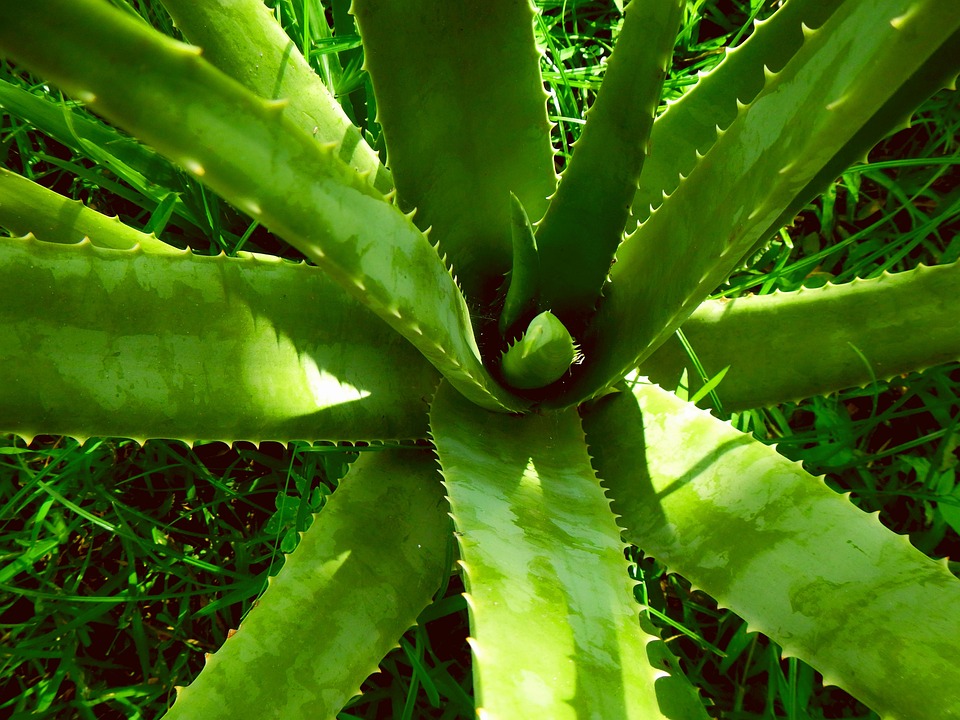How is plant health certified globally? This is a complex question with a multifaceted answer, reflecting the intricate web of international trade, agricultural practices, and biosecurity concerns that underpin our global food system. Plant health certification is not a monolithic system; rather, it’s a patchwork of national regulations, international standards, and collaborative efforts designed to prevent the spread of plant pests and diseases across borders. Understanding how this certification operates requires delving into the roles of key organizations, the different types of certifications, and the challenges faced in ensuring consistent and effective implementation worldwide.
At its core, plant health certification aims to provide assurance that plants, plant products, and other regulated articles are free from harmful pests and diseases. This assurance is crucial for facilitating international trade, protecting domestic agriculture and ecosystems, and maintaining food security. Without reliable certification systems, the risks of introducing devastating pests and diseases would be significantly higher, potentially leading to widespread crop losses, economic disruption, and environmental damage.
The foundation for global plant health certification lies in the International Plant Protection Convention (IPPC), a multilateral treaty overseen by the Food and Agriculture Organization of the United Nations (FAO). The IPPC serves as the international standard-setting body for plant health. Its primary objective is to secure common and effective action to prevent the spread and introduction of pests of plants and plant products, and to promote appropriate measures for their control (IPPC, 1951). The IPPC provides a framework for countries to develop and implement national plant protection organizations (NPPOs) and to establish phytosanitary regulations that align with international standards.
Phytosanitary measures are the core components of plant health certification. These measures encompass a range of activities, including:
- Inspection: Examining plants, plant products, and other regulated articles to detect the presence of pests and diseases.
- Testing: Conducting laboratory analyses to identify pests and diseases that may not be visible during inspection.
- Treatment: Applying treatments, such as fumigation or heat treatment, to eliminate pests and diseases.
- Certification: Issuing phytosanitary certificates to attest that plants, plant products, and other regulated articles meet the phytosanitary requirements of the importing country.
- Surveillance: Monitoring plant populations to detect the presence of new or emerging pests and diseases.
- Pest Risk Analysis (PRA): Evaluating the potential risks associated with the introduction and spread of pests and diseases.
The phytosanitary certificate (PC) is the most widely recognized document in international plant health certification. It’s an official document issued by the NPPO of the exporting country, certifying that the plants or plant products have been inspected, are considered free from regulated pests, and conform to the phytosanitary requirements of the importing country (IPPC, 2019). The certificate typically includes information such as the name and address of the exporter and importer, a description of the plants or plant products, the place of origin, and any treatments that have been applied.
The process of obtaining a phytosanitary certificate typically involves several steps:
- Application: The exporter applies to the NPPO for a phytosanitary certificate.
- Inspection: The NPPO inspects the plants or plant products to ensure they are free from regulated pests and diseases. This inspection may involve visual examination, laboratory testing, or other diagnostic procedures.
- Treatment (if necessary): If pests or diseases are detected, the NPPO may require the exporter to apply treatments to eliminate them.
- Issuance of the Phytosanitary Certificate: If the plants or plant products meet the phytosanitary requirements, the NPPO issues a phytosanitary certificate.
While the IPPC provides the overarching framework for global plant health certification, individual countries have their own specific phytosanitary regulations and requirements. These regulations can vary significantly depending on the pests and diseases that are of concern in each country, the types of plants or plant products being imported, and the perceived risk associated with the import.
For example, the United States Department of Agriculture (USDA) Animal and Plant Health Inspection Service (APHIS) is responsible for protecting U.S. agriculture from pests and diseases. APHIS has strict regulations regarding the import of plants and plant products, including specific requirements for phytosanitary certificates, treatments, and quarantine periods (USDA APHIS, n.d.). Similarly, the European Union has a harmonized system of plant health regulations that applies to all member states. The EU’s plant health regime is based on the principle of preventing the introduction and spread of harmful organisms that can damage plants, crops, and forests (European Commission, n.d.).
Beyond phytosanitary certificates, other types of certifications play a role in ensuring plant health. Seed certification, for instance, focuses on ensuring the quality and purity of seeds, including their freedom from seed-borne diseases. Seed certification programs typically involve field inspections, laboratory testing, and post-control tests to verify that the seeds meet specific standards (OECD, n.d.).
Another relevant area is certification schemes for planting material, such as fruit trees and ornamental plants. These schemes aim to ensure that the planting material is true to type, free from specific pests and diseases, and of good quality. Certification schemes for planting material often involve a system of traceability, allowing the origin and health status of the plants to be tracked throughout the production and distribution chain (EPPO, n.d.).
The effectiveness of global plant health certification is not without its challenges. One significant challenge is the increasing volume and speed of international trade, which makes it more difficult to monitor and inspect shipments of plants and plant products. The globalization of trade has also led to the emergence of new and invasive pests and diseases, which can pose a threat to plant health in countries around the world (Liebhold et al., 2012).
Another challenge is the lack of harmonization in phytosanitary regulations among different countries. While the IPPC promotes the development of international standards, the implementation of these standards can vary significantly from country to country. This lack of harmonization can create confusion for exporters and importers, and it can also lead to trade disputes.
Furthermore, limited resources and capacity in some developing countries can hinder their ability to effectively implement phytosanitary measures. This can create vulnerabilities in the global plant health system, as pests and diseases can spread from countries with weak phytosanitary controls to countries with stronger controls.
To address these challenges, several initiatives are underway to strengthen global plant health certification. These initiatives include:
- Harmonization of phytosanitary regulations: Efforts are being made to harmonize phytosanitary regulations among different countries, based on international standards developed by the IPPC.
- Capacity building: Programs are being implemented to strengthen the capacity of developing countries to implement phytosanitary measures.
- Development of new technologies: New technologies, such as molecular diagnostics and remote sensing, are being developed to improve the detection and identification of plant pests and diseases.
- Enhanced surveillance and monitoring: Surveillance and monitoring programs are being enhanced to detect the presence of new and emerging pests and diseases.
- Public awareness campaigns: Public awareness campaigns are being conducted to educate the public about the importance of plant health and the role they can play in preventing the spread of pests and diseases.
In conclusion, how is plant health certified globally? It’s certified through a complex and interconnected system underpinned by the IPPC, national phytosanitary regulations, and collaborative efforts aimed at preventing the spread of plant pests and diseases. While challenges remain, ongoing efforts to harmonize regulations, build capacity, and develop new technologies are contributing to a stronger and more effective global plant health certification system. This system is crucial for safeguarding agricultural production, protecting ecosystems, and ensuring food security in an increasingly interconnected world. The process heavily relies on phytosanitary certificates, inspection, testing, treatment, and continuous monitoring to ensure the health and safety of plants and plant products across international borders.
References
- European Commission. (n.d.). Plant health. Retrieved from https://food.ec.europa.eu/plants/plant-health_en
- EPPO. (n.d.). Certification schemes. Retrieved from https://www.eppo.int/standards/certification_schemes
- IPPC. (1951). International Plant Protection Convention. Retrieved from https://www.ippc.int/en/core-activities/governance/ippc/
- IPPC. (2019). ISPM 12. Phytosanitary certificates. Retrieved from https://www.ippc.int/en/standards/520/ispm-12-phytosanitary-certificates/
- Liebhold, A. M., Brockerhoff, E. G., Garret, K. A., Park, D. S., Turner, M. G., & Hastings, A. (2012). Biological invasions as a model of global change. NeoBiota, 15, 147-168.
- OECD. (n.d.). OECD Seed Schemes. Retrieved from https://www.oecd.org/agriculture/seeds/oecdseedschemes.htm
- USDA APHIS. (n.d.). Plant Protection and Quarantine. Retrieved from https://www.aphis.usda.gov/aphis/ourfocus/planthealth
Frequently Asked Questions (FAQs)
1. What is a phytosanitary certificate?
A phytosanitary certificate is an official document issued by the plant protection organization (NPPO) of the exporting country to the NPPO of the importing country. It certifies that plants or plant products have been inspected, are considered free from regulated pests, and conform to the phytosanitary requirements of the importing country. Think of it as a plant passport, ensuring safe travel across borders.
2. Who needs a phytosanitary certificate?
Anyone exporting certain plants, plant products, or other regulated articles needs a phytosanitary certificate. The specific requirements depend on the regulations of the importing country. It’s always best to check with the NPPO of both the exporting and importing countries to determine if a certificate is required.
3. What happens if plants arrive without a phytosanitary certificate when one is required?
The importing country’s authorities can take several actions. Most commonly, the shipment might be refused entry, meaning it’s sent back to the exporting country. In some cases, the shipment might be quarantined for further inspection and treatment (at the importer’s expense). In the worst-case scenario, if the risk of pest introduction is deemed too high, the shipment could be destroyed.
4. How long is a phytosanitary certificate valid?
The validity period varies depending on the regulations of the importing country and the type of plants or plant products being shipped. Typically, certificates are valid for a relatively short period, often just a few weeks or months, to ensure that the plants or plant products remain free from pests and diseases during transport. Check with the importing country’s NPPO for the specific validity period.
5. What are regulated pests?
Regulated pests are pests that are of quarantine concern to the importing country. These pests are considered to be a potential threat to plant health, and their introduction could cause significant economic or environmental damage. Each country maintains a list of regulated pests, which can be accessed through their respective NPPO websites.
6. Is plant health certification the same in every country?
No. While the IPPC provides a global framework, individual countries have their own specific phytosanitary regulations and requirements. These regulations can vary significantly depending on the pests and diseases that are of concern, the types of plants or plant products being imported, and the perceived risk associated with the import. This is why it’s vital to always check the specific requirements of the importing country.
7. What is Pest Risk Analysis (PRA)?
Pest Risk Analysis (PRA) is a process used to evaluate the potential biological, economic, and environmental consequences associated with the introduction and spread of pests. NPPOs use PRA to determine which pests pose the greatest threat and to develop appropriate phytosanitary measures to prevent their introduction and spread. It’s a key tool for making informed decisions about plant health regulations.
8. How can I find out about the specific phytosanitary requirements for a particular country?
The best way is to contact the NPPO of the importing country directly. You can usually find their contact information on their official website. The IPPC also provides a directory of NPPOs on its website. Consulting with a customs broker or a plant health consultant can also be helpful.
9. What is the role of the IPPC in global plant health certification?
The IPPC serves as the international standard-setting body for plant health. It provides a framework for countries to develop and implement national plant protection organizations (NPPOs) and to establish phytosanitary regulations that align with international standards. The IPPC also facilitates international cooperation on plant health issues and promotes the harmonization of phytosanitary regulations.
10. Are there any alternatives to phytosanitary certificates?
In some cases, there may be alternatives to phytosanitary certificates, such as specific import permits or compliance agreements. However, these alternatives are typically only available under specific circumstances and may require additional documentation or procedures. Always consult with the NPPO of the importing country to determine if any alternatives are available.





